By Patricia Belyea
CHICAGO IL Artist Sarah Nishiura was endowed with many gifts. Her grandmother was a quilter. Her mother was a family seamstress who made clothes for her five children. Her father was a mathematician. And she was schooled as a painter. All these tumbled together to make Sarah an astute quilter who stretches her thinking from big ideas to thoughtful details.
My visit with Sarah included lunch AND Liz Logan. Liz, a spunky freelance journalist, just moved into the neighborhood from Brooklyn. Last year Liz interviewed me for her podcast Collecting Culture (Episode 3). So MY interviewer stayed and listened to me interview Sarah. Haha!

The three of us excitedly examined all the quilts that Sarah laid out on her living room floor. Let's start with her newest quilt that Sarah refers to as The Orange One. This postage stamp quilt has perpendicular blocks and blocks on point. In the center of each side of the quilt sits a gray triangle.
I want you to note three things in the lower detail shot: (1) The quilting stitches line up with the direction of the blocks (2) The triangle has both straight and angled stitches that extend in from the blocks on either side (3) The binding matches the quilt top design.


The Pink and Gray One utilizes fabric from 1950s red patterned dresses paired with gray solids. Optimistic in design, each quilt block includes three softly curved sides. As a quilter, think about the construction of this quilt. Hint: there is a seam in the center of each grey form.
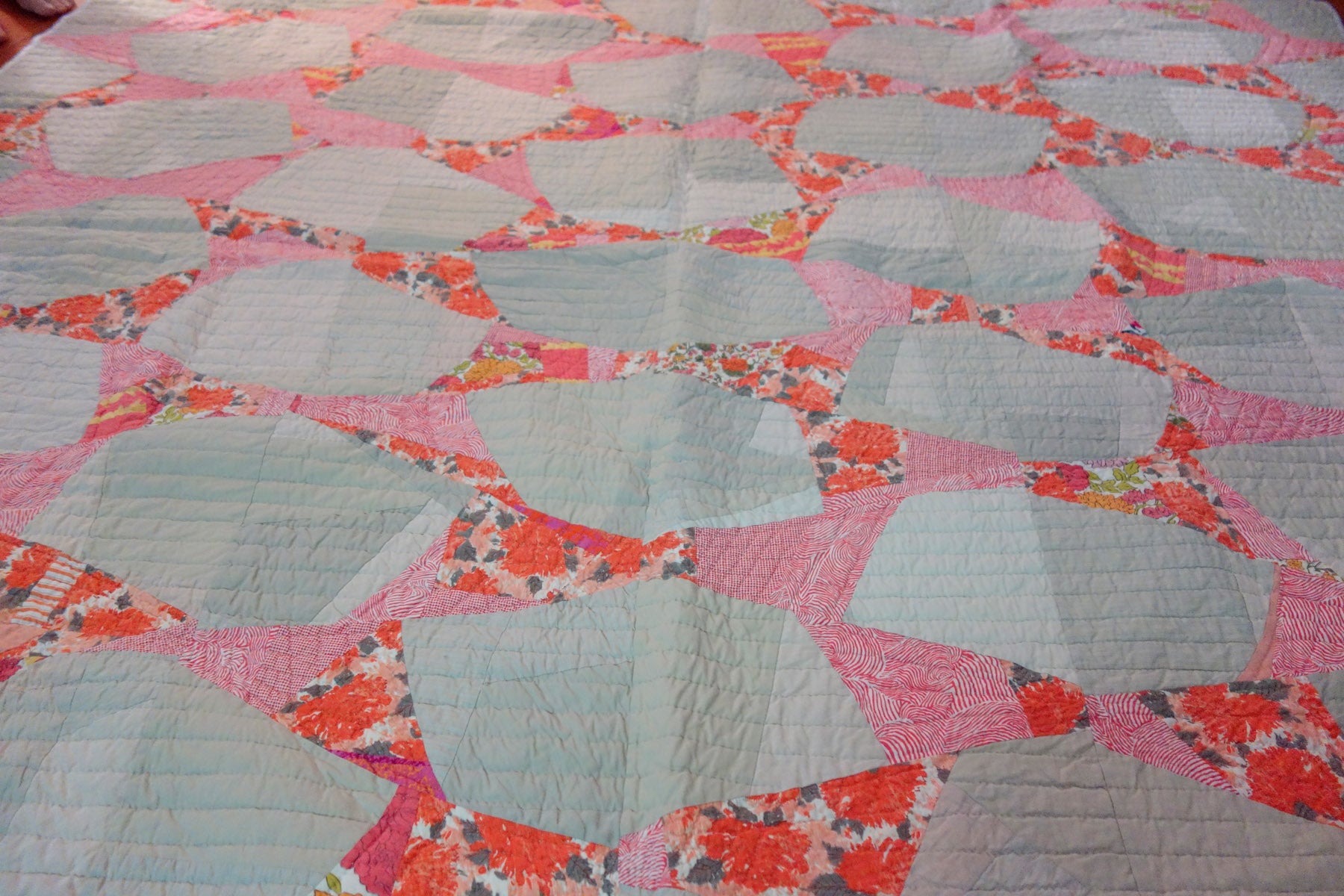
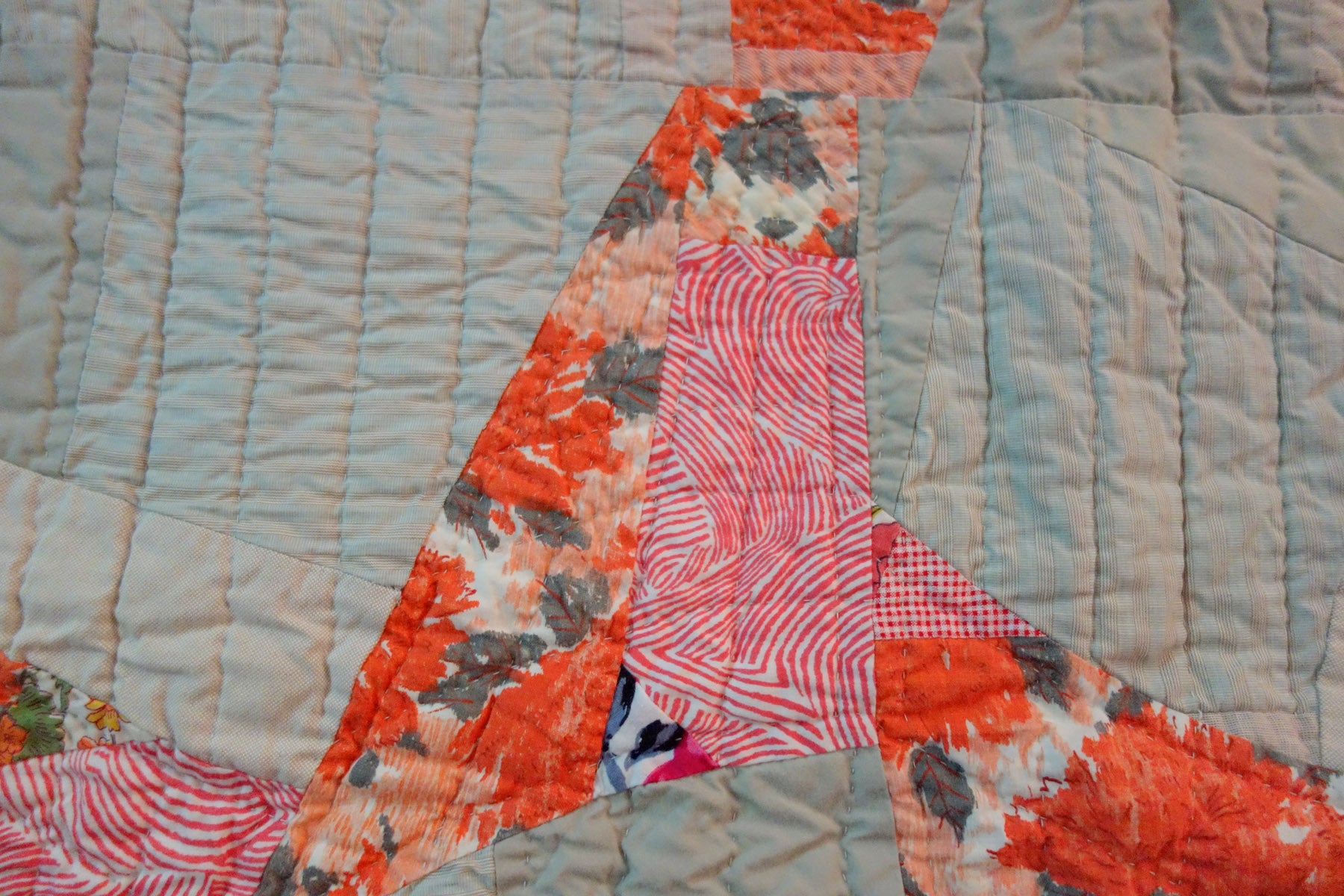
For The Brown and Purple One, Sarah played with the idea of a vanishing point. How did she make the pattern? Sarah worked it out on graph paper. Of course!



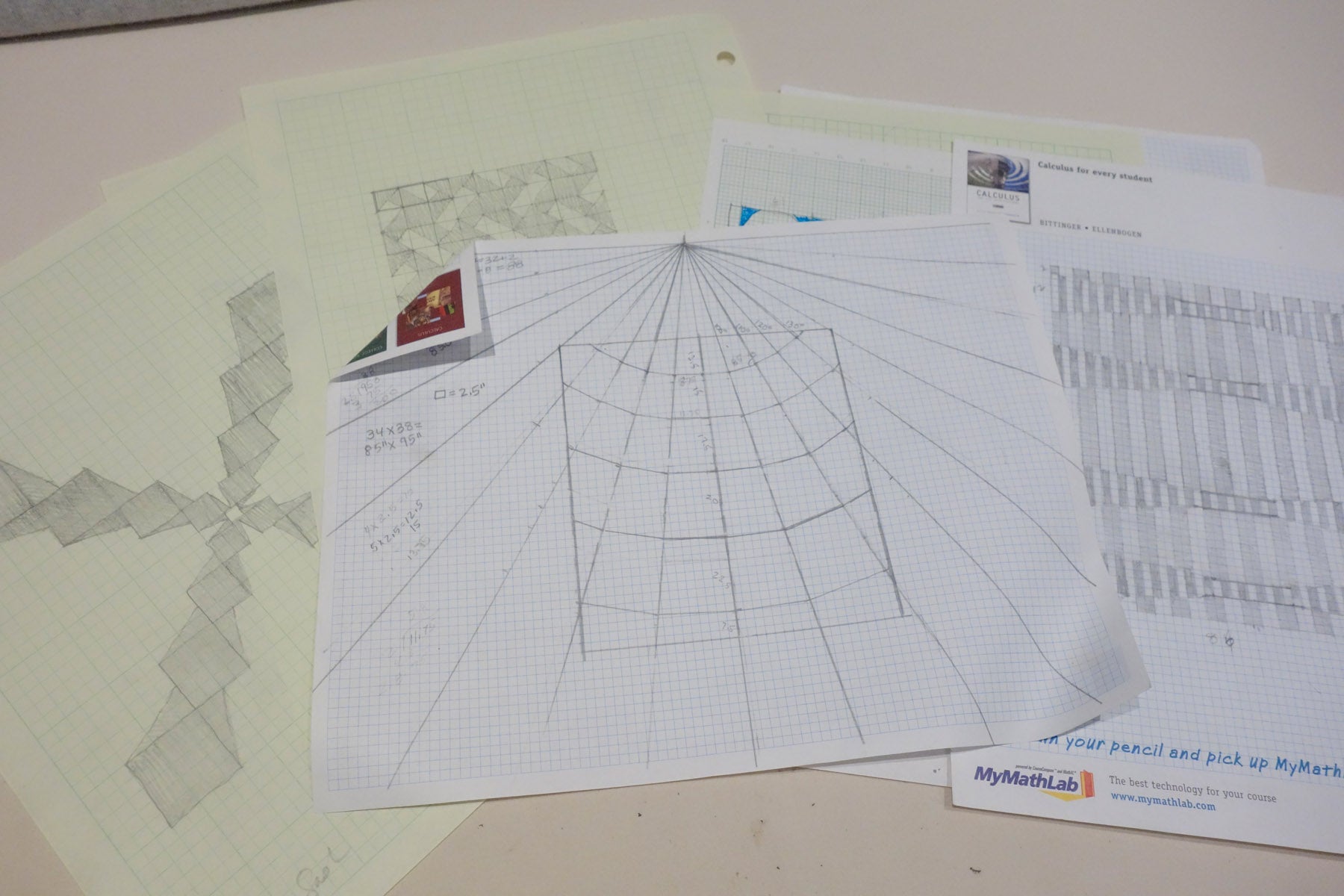
The concept for Red Hill came from Sarah helping her son with his mathematics homework, talking about parabolae in particular. You can see the math in this composition with the shrinking strips manifesting a curve. Also check out how Sarah applied the same stitch pattern to each strip and how the stitch pattern becomes condensed closer to the top of the hill.



Sarah explained how The Black and Brown One told the story of two figures. She placed the shapes on a white background so they would come forward. A point of pride—the binding is made from an upcycled shirt.


The complex compositions in Sarah's quilts look simple—an achievement that comes from a mastery of craftsmanship and design. The subtle details reveal Sarah’s true spirit. She’s an engineer-artist who cares about everything in the creation of her quilts.
Sarah, who's self taught, uses vintage and found fabrics (mostly from clothing) in her quilts although the backs are made with new fabrics. Stitching is done by hand. Awhile back she worked with Amish stitchers but now Sarah finishes all her quilts herself. She bastes on a Ulmer Quilter frame and then lap stitches.
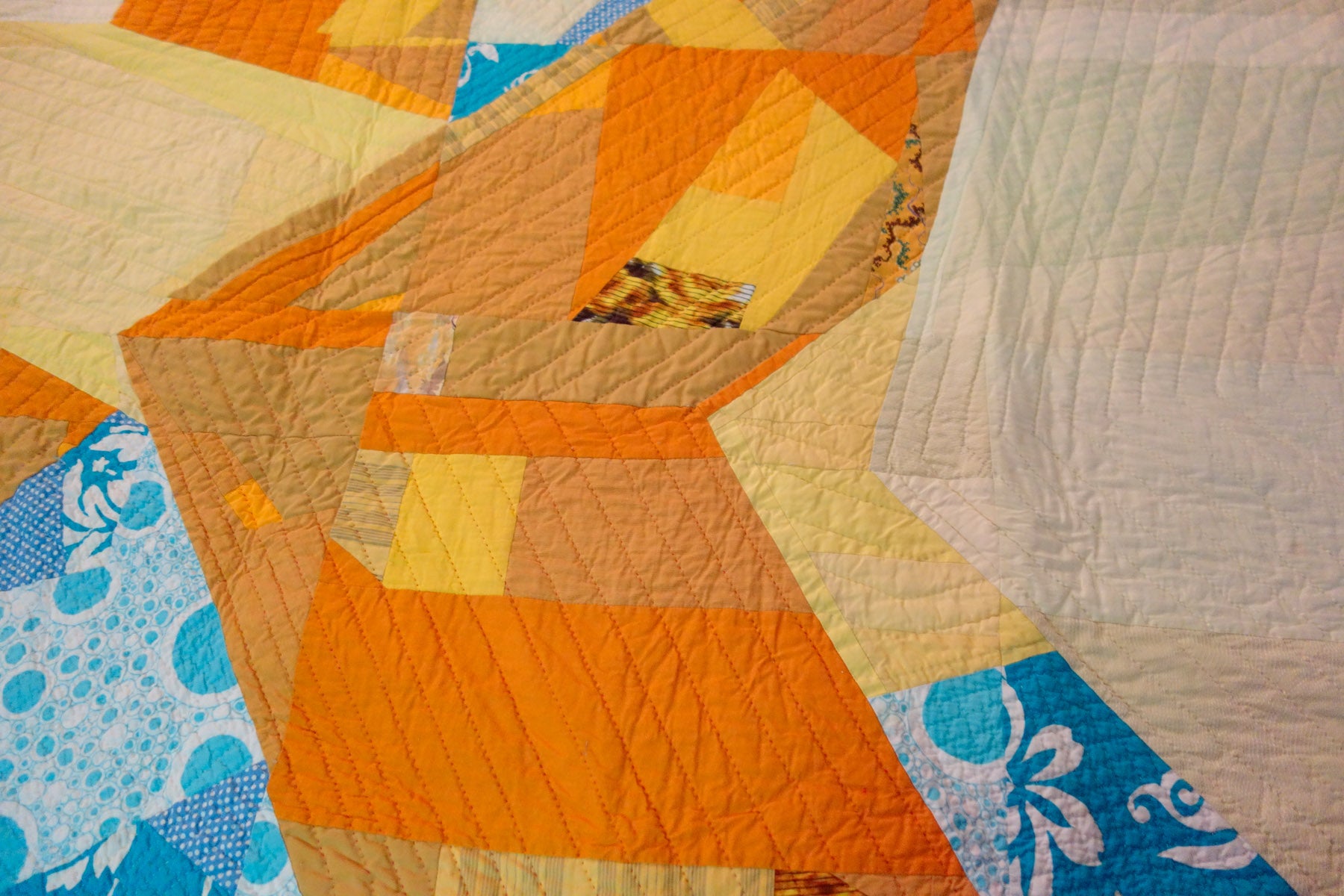
A small bedroom on the first floor of Sarah's classic 1912 home serves as her studio. Little vignettes of precious objects share a tall cupboard with her fabric stash. There's not a big surface for a design wall so Sarah uses her living room floor to check out her work.

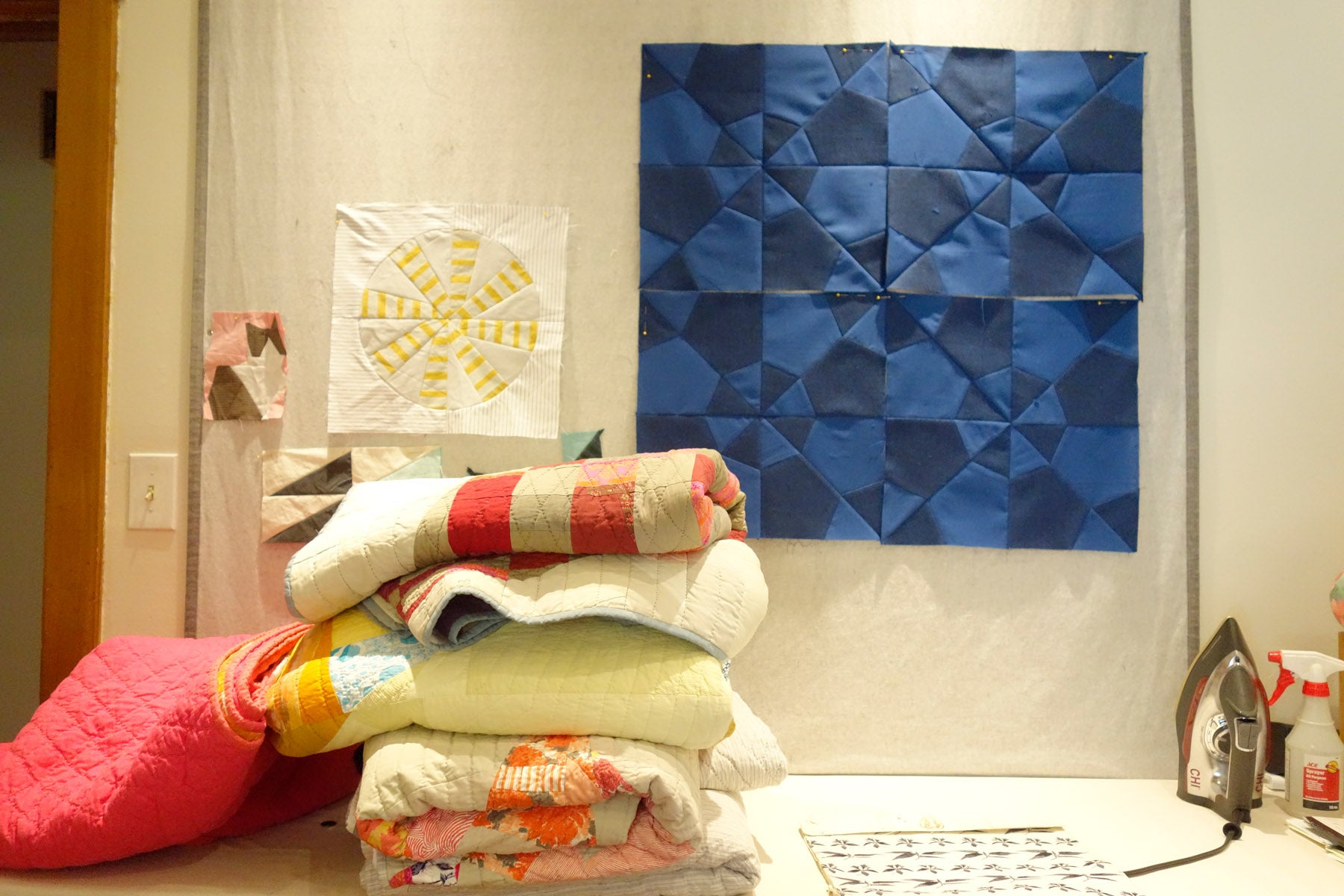
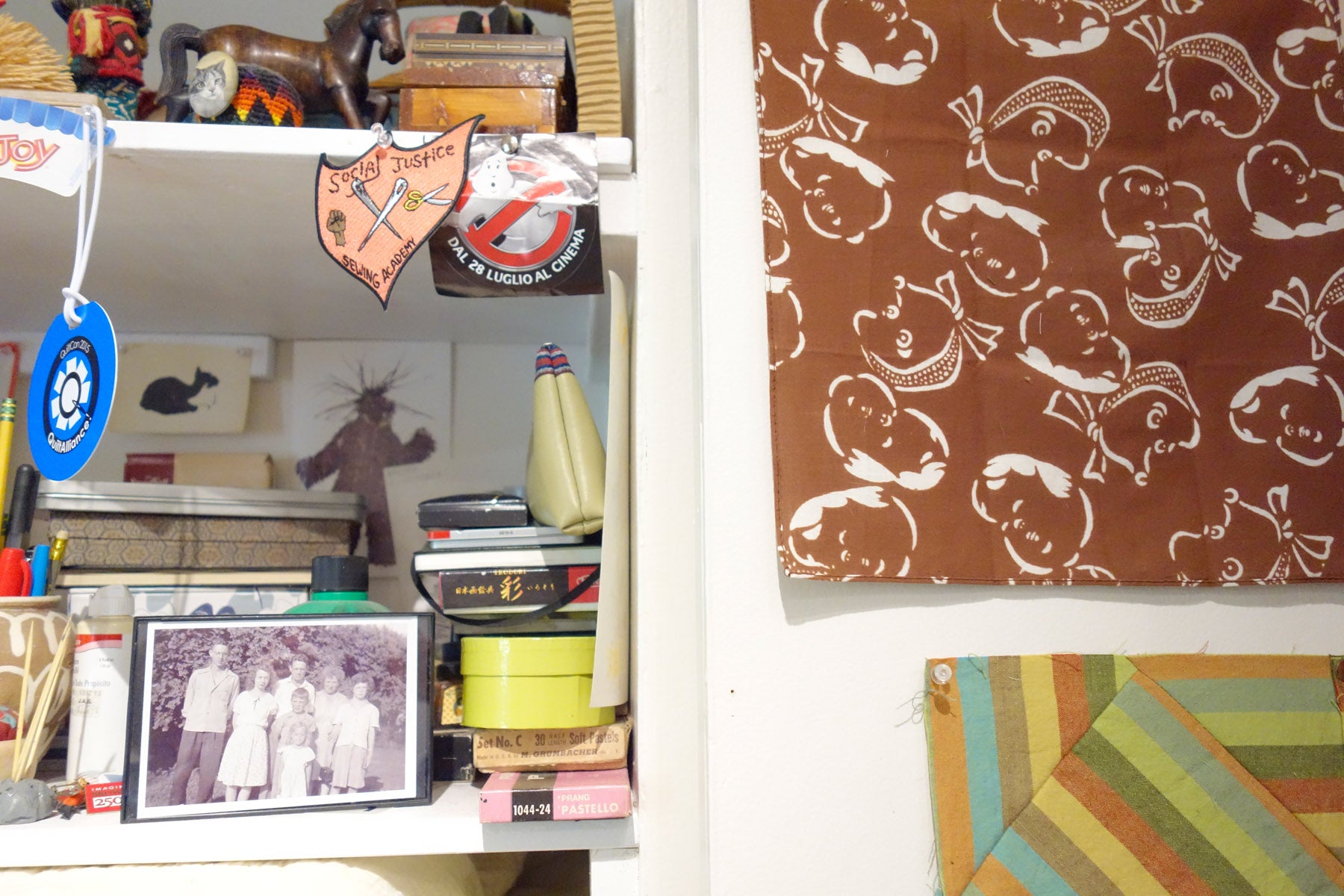
Locally Sarah teaches quilting at Hyde Park Art Center and LillStreet Art Center. She also speaks and teaches at guilds. Next year you can find her at QuiltCon. When you do catch up with Sarah, you'll be pleased to meet an unassuming yet amazing quilting virtuoso.

To see more quilts by Sarah on her website +click here









